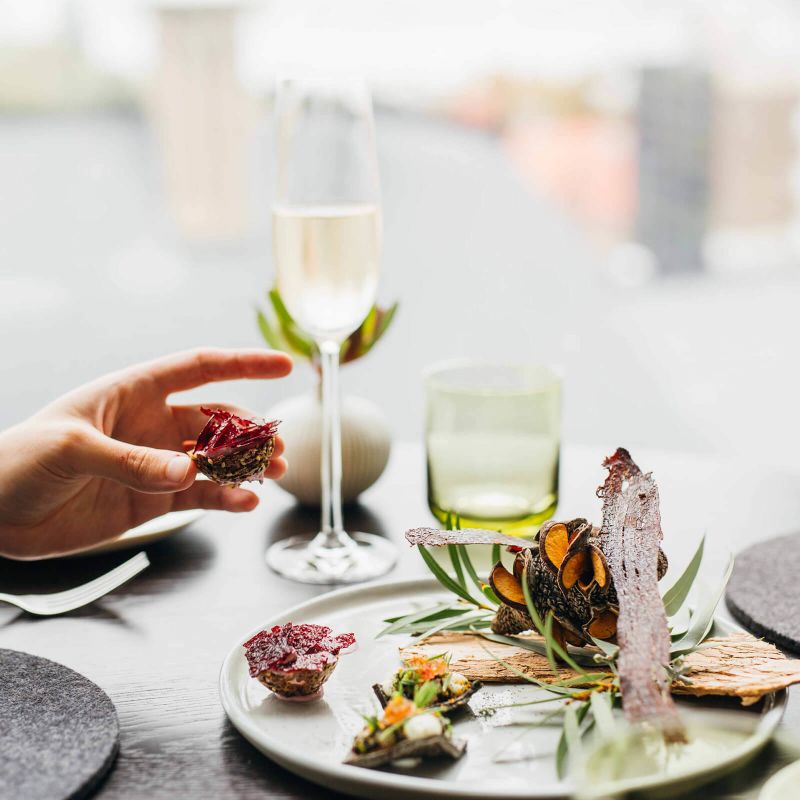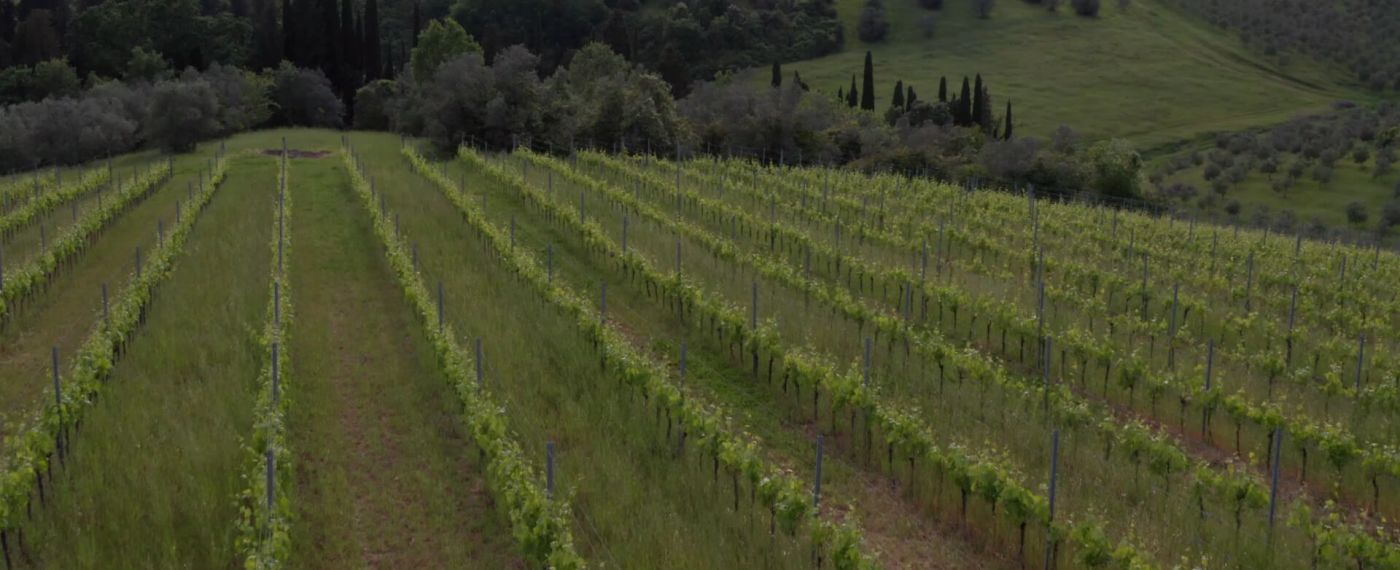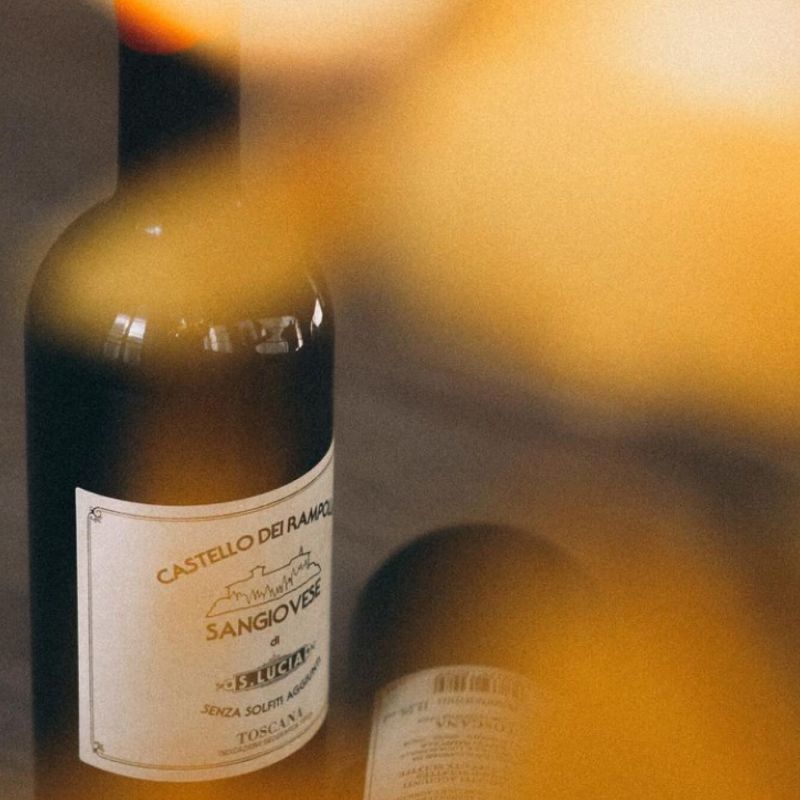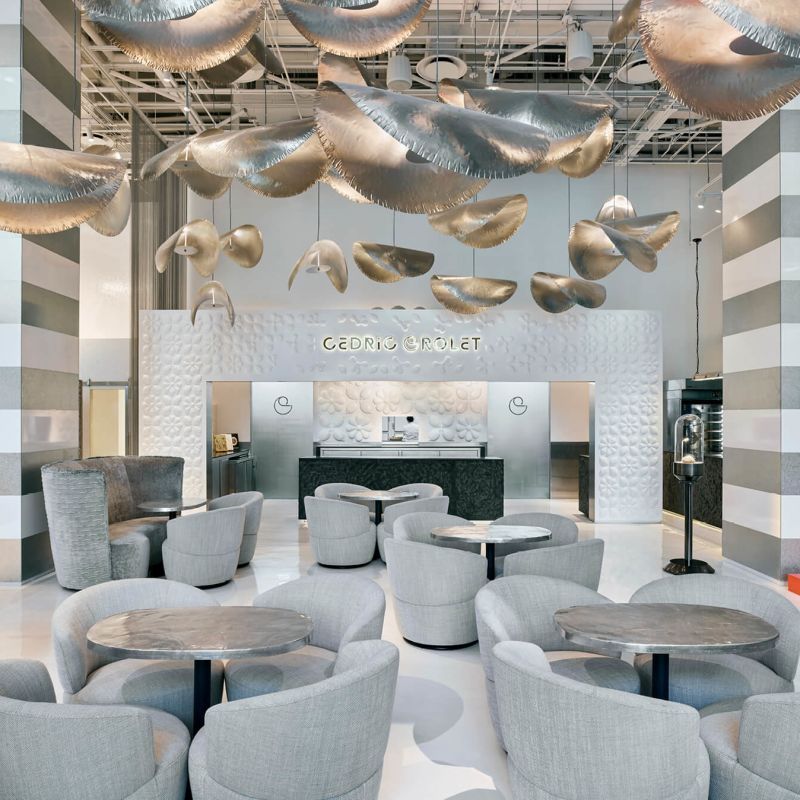
Wine expert Guy Woodward travels to COMO Castello Del Nero and Chianti to get to the heart of Italy's modern, rich and bold wine flavours.
MAIN PHOTOGRAPHS MARTIN MORRELL

The rolling hills of Chianti are those of the mind’s eye. A patchwork of venerable olive trees and rows of gnarled vines is broken only by the odd stone farmhouse dotting the parched landscape, its terracotta hue mirroring that of the setting Tuscan sun. Save for the odd Fiat 500 traversing the winding roads, it is a scene as old as, well…
The annual grape and olive harvests have been playing out in this Tuscan heartland since the days of the Etruscans in the 8th century BC. Producers jostle for the accolade of oldest – Antinori, one of the bastions of the region, traces its commercial production back to 1385. Its winemaking heritage has since survived – and thrived – unbroken through 26 generations of its aristocratic lineage to establish the family name as one of Italian wine’s most renowned (and yes, it makes olive oil too).

Producers jostle for the accolade of oldest – Antinori, one of the bastions of the region, traces its commercial production back to 1385.

Watching the slick, stylised film of patriarch Marchese Piero Antinori and his three daughters strolling through the vineyards, wicker baskets of grapes in hand, you could be forgiven for thinking that little has changed in the viticultural process over the last six-and-a-half centuries. Yet we are viewing the footage in a cinema-sized auditorium within Antinori’s vast, headline-making, 50,000 square-metre winery built into the contours of the Chianti countryside. Opened in 2012, the architecturally vaunted facility’s cost spiralled as extravagantly as the faux weathered steel stairs that cascade down into the underground cellars, finally clocking in at well over $100m.
We are on a two-hour tour with 14 others, from Brazil, Colombia, South Africa, Belgium Germany, the US and the UK. 50,000 visitors a year come to learn the journey of grapes harvested from the vineyards of Chianti Classico (the premium part of Chianti, as befitting its DOCG status – think of it as the yolk of the Chianti egg) into tanks, vats, barrels and finally bottles, two million of which are aged for up to two years here to develop the appellation’s signature savoury cherry tang. Our tour ends with a tasting of four such wines, including Antinori’s so-called ‘SuperTuscan’, the $130 Tignanello, which is on sale, along with a vast array of other cuvées and assorted branded merchandise, in the extensive gift shop.

Fifteen minutes down the road at Casa Emma, while the backdrop is similarly bucolic – not least in the lines of cypresses and omnipresent calling of the cicadas – the ambience couldn’t be more different. A swift, effectual tour of the simple cellar – complete with rustic terracotta vats – precedes a more expansive tasting and lunch on the homely terrace overlooking the vines. The unattended, unpretentious gift shop could be (and probably was, at one stage) the owner’s front room. Despite the contrast in scale with the grandeur of Antinori, Casa Emma also has its own ‘SuperTuscan’ wine which, our host is keen to tell us, has been garlanded with 94 points from specialist Italian wine critic James Suckling.
The ‘SuperTuscan’ moniker encapsulates the sometimes uneasy marriage of ancient and modern in these parts. The boundaries of Chianti, midway between Florence and Siena, were first established in 1716 by the Grand Duke of Tuscany, Cosimo III de Medici. A century and a half later, Bettino Ricasoli – whose family estate, Barone Ricasoli, today houses a fine osteria for those willing to make the one-hour journey from COMO Castello del Nero to the southern end of Chianti Classico – became the then newly formed Italy’s second prime minister. More significantly for our purposes, he drew up the rules for the production of Chianti, insisting that the wine boast a dominant proportion of the native Sangiovese grape within its blend.

By the 1970s, however, the rules limited producers to a maximum of 70 per cent Sangiovese, and insisted on other indigenous varieties being part of the mix, including at least a 10 per cent dash of white wine. Antinori challenged the orthodoxy by producing a wine that blended 80 per cent Sangiovese with the more generously fruited Cabernet Sauvignon and Cabernet Franc, two French varieties now ubiquitous in the wine world. The inaugural vintage of Tignanello was 1971, and since it didn’t meet the criteria for Chianti Classico, it was labelled as a modest vino di tavola.
More producers followed suit, and when such wines – often with more overt sweetness and oak than their native counterparts – started capturing critical acclaim and lofty price tags, the standard Chianti bottlings suffered by comparison. Somewhat nonsensically, Chianti became the poor relation in its own region. Instead, all the interest was in the ‘SuperTuscans’, whose bold, ripe flavours found favour with the tastes of the most influential commentators (notably in the lucrative US market).

The authorities needed to act, and rules were relaxed to allow for Chianti Classico to contain a minimum of 80% Sangiovese; as of the 2006 vintage, the stipulation to include white wine in the blend was dropped. At the same time, a new category – Indicazione Geografica Tipica, or IGT – was established for the ‘SuperTuscan’ wines that bent the rules but remained an authentic rendering of the region.
At Decanter magazine, which I edited in the noughties, we employed inverted commas around the term to reflect the fact that the category wasn’t an official designation. Any Tuscan wine can be termed as such if it doesn’t conform to the region’s regulations – and, naturally, some ‘SuperTuscans’ were, and to an extent still are – more Super, and more Tuscan, than others.
Ultimately, however, the two have come to happily co-exist, and an argument can even be made that the investment and attention to detail inherent in the more ambitious IGT wines eventually rubbed off on the Chianti category. Certainly any of the latter’s historic connection to raffia lampshades or Hannibal Lecter’s infamous liver-and-fava-bean food match have now been all but forgotten.
Indeed according to no less an authority than Jancis Robinson MW, "the producers of Chianti Classico are on a roll". With the retirement of the omnipotent American critic Robert Parker – a committed admirer of big, bold, structured wines – the trend now is for lighter, more subtle wines. And as climate change has taken hold, the cooler, higher altitude of Chianti is proving itself well suited to crafting such nuanced renderings.

Another issue is at play too. Such is their ubiquity that Cabernet Sauvignon and Merlot, whose heritage is in Bordeaux, have become international grapes – durable, recognisable but, in some cases, rather one-dimensional. The world today, in most aspects of art and culture, is about local, authentic, native products with clearly discernible characteristics. And with its limestone and sandstone soil, moderate climate and varied topography having proven, over the course of several centuries, the perfect canvas for yielding Sangiovese’s signature bright, red-fruited acidity, Chianti is having something of a moment – as we see time and again over the course of several tastings at largely unshowy, family-run wineries.
Today, Sangiovese is back in vogue. So much so that from 2027, the minimum proportion in any Chianti Classico will rise to 90 per cent. In Brunello di Montalcino, south of Chianti towards Siena, the stipulation is for 100 per cent (as was famously exposed by the scandal of the first decade of the century, when some producers were found to have beefed up their wine with non-native varieties, in a bid for a riper style). Brunello is the local dialect’s word for Sangiovese – a derivative of ‘bruno’ or brown – and today, that Tuscan identity is again something to be burnished.

Driving around the vineyards of Chianti Classico, the holdings of the mainly small-scale producers (everything looks miniscule compared to Antinori) are dominated by Sangiovese. Arriving at Isole e Olena, there is no grand entrance or artifice to highlight the estate’s stellar reputation. Indeed until we peak inside a non-descript outbuilding and find a smattering of oak barrels, we wonder whether we are in the right place (the property does not offer visits to the public, but Castello del Nero’s well-connected concierge may be able to facilitate access). Established by Francesco di Marchi in 1956, and run by his son Paolo since 1976, the winery is in the midst of a transition under new owners, a family group which also owns legendary Brunello estate Biondi-Santi. Its much heralded SuperTuscan, Ceparello, is made from 100 per cent Sangiovese and is exemplary of the depth and complexity that the variety can yield. The wine is named after the stream at the highest point of the estate, which sits between the two eponymous villages (Olena, we are told, is these days home to just a single inhabitant).

Regionality, it seems, is once again something to be treasured, rather than camouflaged. As of the 2020 vintage, producers are able to label their Chianti Classico wines with the name of the exact commune (there are 11 within the appellation) from which it hails. Some, including the aforementioned Barone Ricasoli, are even turning to the increasingly fashionable single-vineyard Chiantis, for a still more precise reflection of their terroir.
‘I prefer the native varieties that reflect their soil, their local conditions’ says Gioele Biundo, sommelier at COMO Castello del Nero, during a tasting for guests in the property’s cool, sepulchral cellar. He presents a Chianti, a Brunello and an IGT, the latter from an almost extinct local variety, Pugnitello, which translates as ‘little fist’ and is indeed somewhat punchy. ‘Why would you come to Tuscany and drink Cabernet Sauvignon?’ he asks.

That evening, we share a dinner with other guests in the olive grove at the foot of the property, bordering the COMO Castello Del Nero vineyard. As we are serenaded by local musicians while sharing small Florentine plates complemented by the property’s own Sangiovese and olive oil, both sourced from just metres away, I think back to Gioele’s question. Why indeed…
If you would like to try a tasting or visit any 'SuperTuscan' cellars, please get in touch with our COMO Castello Del Nero concierge team.


